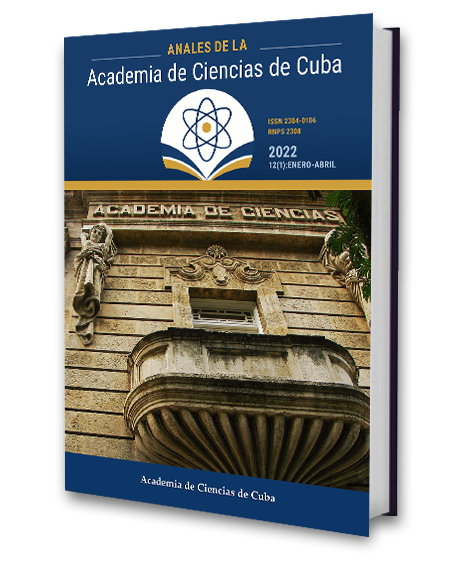New lead-free piezoceramics based on knn
Keywords:
PFM, Ferroelectrics, Permittivity, KNNAbstract
Introduction. This paper shows the description of the methods used to obtain doped lead-free KNN piezoceramics: (K0.5Na0.5)0.95La0.05(Nb0.9Ti0.05)O2.9 and (K0.44Na0.52Li0.04)0.97La0.01Nb0.9Ta0.103 piezoceramics, and their physical characterization. The objective was to achieve a reproducible obtaining method that will promote good physicochemical properties in the systems used and to use new dopants such as Ti, with a lower price in the market, and La, not studied yet in the literature consulted, to modify and control their physicochemical properties. Methods. A combined method of grain growth reaction is used, to obtain the precursor NaNbO3 and from this we make it react in solid state with the other reactants, thus simplifying existent methods, and the characterization: dielectric, phase transition, structural characterizations by X-ray diffraction and piezoforce microscopy (PFM). Results. The photo-luminescence piezoceramics doped with La and Ti show a good power emission of blue light. In both compositions presented, the doping with the La cation regulates the grain growth, modifies dielectric properties, and lowers transition temperatures. In the KNN compound doped with Li-La-Ta, the phase coexistence at room temperature and good dielectric properties and a certain anisotropy in the orientation of the domains are obtained. The experimental results carried out by PFM demonstrate excellent piezoelectric constants def = 166 pCN-1 compared to the best PZT ceramics. Conclusions: the results presented favor their potential use as ferroelectric light emitters, as well as lead-free transducers. Neither composition has been internationally accredited yet.Downloads
Published
How to Cite
Issue
Section
License
The journal Anales de la Academia de Ciencias de Cuba protects copyright, and operates with a Creative Commons License 4.0 (Creative Commons Attribution-NonCommercial License 4.0). By publishing in it, authors allow themselves to copy, reproduce, distribute, publicly communicate their work and generate derivative works, as long as the original author is cited and acknowledged. They do not allow, however, the use of the original work for commercial or lucrative purposes.
The authors authorize the publication of their writings, retaining the authorship rights, and assigning and transferring to the magazine all the rights protected by the intellectual property laws that govern in Cuba, which imply editing to disseminate the work.
Authors may establish additional agreements for the non-exclusive distribution of the version of the work published in the journal (for example, placing it in an institutional repository or publishing it in a book), with recognition of having been first published in this journal.
To learn more, see https://creativecommons.org






